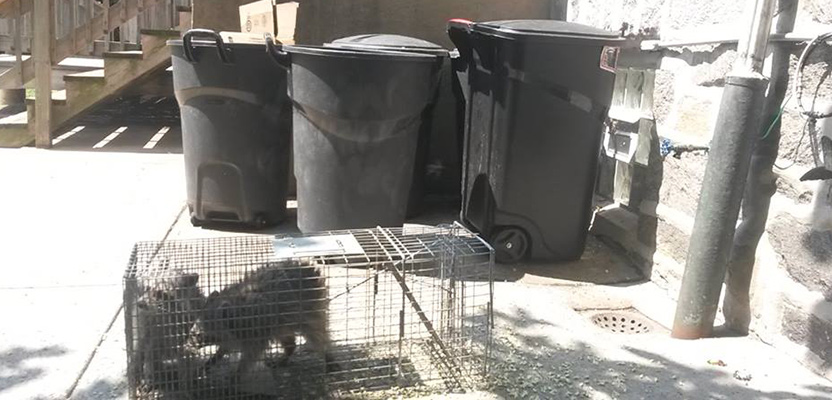Of course, raccoons are attracted to food and shelter! Some common foods that attract raccoons include human food in garbage cans, and pet food, and bird seed in feeders. Raccoons are attracted to goldfish ponds, and chicken coops, and even birds in cages. They are also attracted to safe places to live, such as an attic of a house that is easy to get into.
- Food in garbage cans
- Pet Food
- Bird Feeders
- Goldfish Ponds
- Chicken Coops
- Dumpsters
- Fresh Sod and Grubs
- Gardens with Sweet Corn
- Pet Doors
- An Unsecured Attic
NEED LOCAL HELP? We have wildlife removal professionals servicing 95% of the USA. Click here to hire a local raccoon removal expert in your home town. Updated 2018. But read the below advice first!\

Availability of food and access to it is one of the principal factors that make a home or property attractive to raccoons. Being omnivores, raccoons feed on a wide range of diet. They will love to visit your home often if they find their favorite delicacy stacked up at places they can easily reach and make merry without much stress. Fallen fruits, easily accessible feeders, meat-laden rubbish bins are things just increase the frequency of raccoon visitations as well as the possibility of them establishing a permanent base.
Shelter is another key issue that will either make your home attractive or inhabitable by raccoons. Woodland environments are their natural and preferable shelters. Even then you should make no mistake; these creatures are an adaptable breed capable of putting up almost anywhere whenever they can customize available facilities to suit their needs. From chimneys to attics, raccoons love environments that mimic their natural environments. They will not take any chances taking up abandoned rodent habitats whenever they find them, so ensure you r home is free from these.
Once they have eaten to their feel, raccoons will love to quench their thirst hence free and accessible sources of water are necessary. Empty bottles of water that collect and store water, uneven surfaces that make water stagnate or other places where raccoons need no rocket science to quench thirst set the perfect conditions for their inhabitation. Ensure you drain water that is stagnant, expose any other water-collecting surfaces to the sun’s drying effect and keep tanks closed to avoid access.
Finally, raccoons love the cover of darkness. If your home and property have no security lights then your friends will definitely have a field day operating during the night. Their eyes have no problem piercing through the dense blanket of darkness while their nose leads them to the party point. This could be the food-laden bin, the free-access kitchen or the bountiful garden with uncollected ripe fruits lying on the ground. Take caution! To learn more about what things attract raccoons to your house or property, visit the Raccoons in the Attic home page.
You may also be interested in these other educational articles I wrote:
How to Make a Raccoon Trap
How to Hunt Raccoons